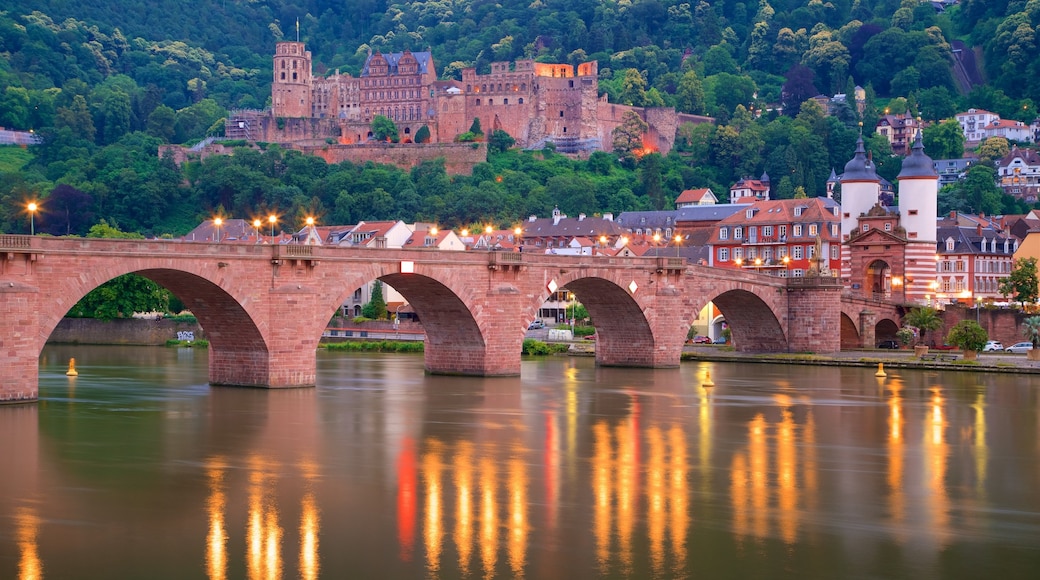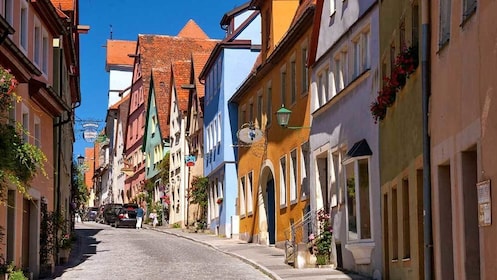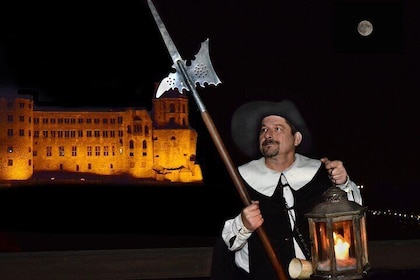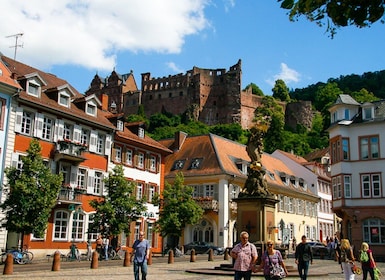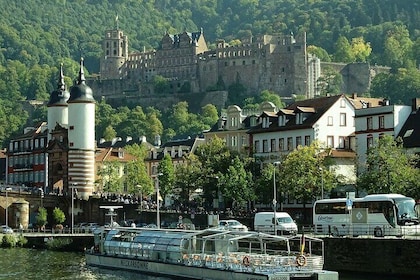Go for a walk on Karl Theodor Bridge (also known as Old Bridge or Alte Brücke), which crosses the Neckar River from the edge of Heidelberg’s historic Old Town. Admire its classical stone design and artistic ornamentation. Appreciate uninterrupted views of the lush green Neckar Valley and some of the city’s finest monuments. Karl Theodor Bridge has long been an inspiration for artists and has had works written about it by well-known poets such as Friedrich Hölderlin.
The bridge and its location have a long and interesting history. Wooden bridges crossed the river from as far back as 1284 until 1784. Prince Elector Karl Theodor commissioned the first stone construction in 1786. It stood for over 150 years, before being destroyed by German soldiers toward the end of World War II. Walk across today’s recreated bridge, with its nine sandstone arches. It was inaugurated in 1947 and funded by donations from the city’s residents.
At the southern entrance is Bridge Gate, which was once part of the Old Town’s medieval fortification wall and later served as a jail. It features a stone archway with a portcullis. On either side are twin towers crowned by Baroque-style spires. Adjacent to the gate is the Bridge Monkey, a bronze sculpture that symbolizes equality between the city dwellers and outsiders. Look for the inscription of a poem about the monkey written by Martin Zeiller in 1632.
Sculptures by Konrad Linck add artistic flair to both ends of the bridge. The one closest to the Old Town depicts the Prince Elector Karl Theodor. The other portrays Minerva, the Roman goddess of the arts and wisdom. Gaze along the river and up to the surrounding forest-covered hills. Spot landmarks such as Heidelberg Castle and the tower of the Church of the Holy Spirit.
Public buses stop close to Karl Theodor Bridge. It is a 15-minute walk from Heidelberg-Altstadt U-Bahn station. While the views are great during the daytime, take a second look after dark when a series of lights spectacularly illuminate the bridge’s arches, gate and sculptures.
